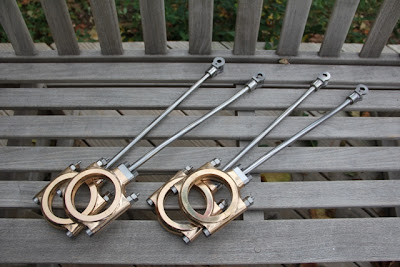It's been a while since I had originally set up this blog page but I guess I had start showing something.
I am building a marine steam engine. Specifically, the York Compound engine designed by John York from castings offered through the Elliot Bay Steam Launch Company. I intend to show some of the progress photos as I progress through the build of this engine though as often is the case with the build there will be bursts of work separated by long intervals of interruptions. Life often gets in the way of these kinds of projects. I expect the project to take another few years to complete just as it's taken a few years to get to where I am currently at. I do have about 35% of the parts completed so far but it's been mostly the smaller items I have been learning as I go along and its easier to replace stock material than a messed up casting so that is were I started.
I am a novice machinist and this is my second machining project. My first was a set of Stirling Engines that I had made as gifts for my father and father-in-law. They turned out quite nicely and I have been told that low temperature differential Stirling engined are quite challenging. I think, as with anything if you take your time and learn from mistakes you can accomplish nearly anything you set out to do.
I thought I would start out with the parts that I have most recently completed, the eccentric strap and reach rod assemblies. The eccentric straps are supplied as bronze castings and have been machined and polished. The reach rods are fabricated from 1018 CRS components that have been brazed to join together and then polished as well.
I really like the look of polished steel. I am a bit worried about corrosion in a marine environment and am considering having the steel parts bright nickle plated at some time before the engine is assembled.
The eccentric sheaves are polished bronze. I have purposefully not polished to a jewelry like finish. The finish is mainly to "normalize" the surface of the sand cast parts. Several museum visits and study of photos of vintage machinery from the 1880's - early 1900's suggests that most machinery was finished to a quite high level of workmanship. Even if the castings were not polished it appears that not a small amount of labor was placed in removal of casting marks and smoothing of the surface left during the sand casting process. This process is called fettling and it's a lot of work. At some time later I may give more of a step-by-step description including some of the tools that I have learned work well.
The eccentric straps (the bronze parts) are one of my first attempts at machining cast parts. The bronze machines very nicely but setting up the parts takes a lot of thought and planning to make sure that the part you want to end up with stays within the material that you start out with.
That's all for now. Hope you enjoy my ramblings.
Sunday, November 7, 2010
Subscribe to:
Posts (Atom)

